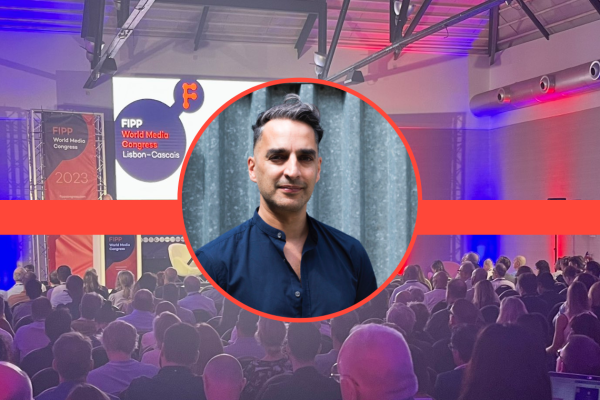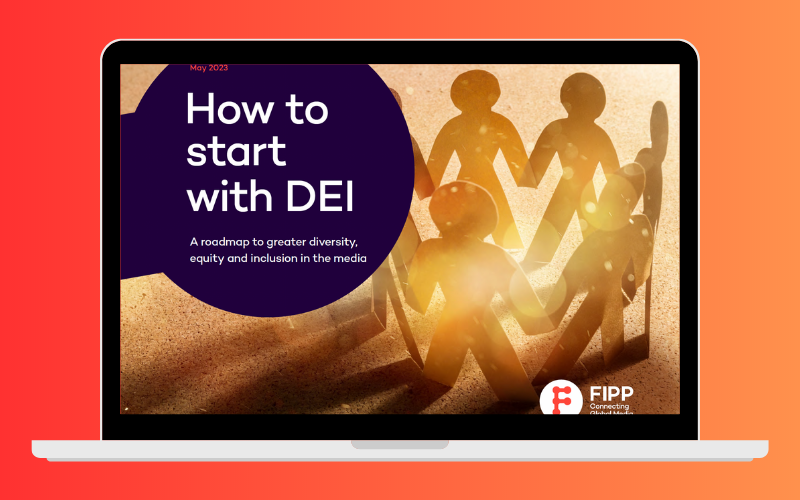Shirish Kulkarni on the power of diversity and inclusion and how D&I drives innovation in media
Diversity internship programmes count for little if the work environment new employees step into at media organisations remain toxic. This was the warning from Shirish Kulkarni, D&I Innovation Consultant, journalist and researcher at Monnow Media, as he sat down with Media Unscripted podcaster Charlotte Ricca for a discussion on the power of diversity and inclusion at the FIPP World Media Congress.
“Let’s look at what the substantive problem is and what the goal is we’re trying to get to,” he pointed out. “Most publishers here will have some kind of diversity internship programme, because that’s the answer, right? Except it’s not the answer, because what’s the problem you’re trying to fix? If it’s a problem of trying to tell more stories, trying to get more people coming through the pipeline, then that doesn’t solve the problem.
“Being that one person of colour in the newsroom is a terrible experience because even if you bring a diverse perspective, people go, ‘Could you have a diverse perspective that fits more with the perspective we already have because that’s a lot easier for us’.
“So, it might look good in your annual report at the end of the year saying we have a diversity internship, but it has not engaged with the substantive problem, and actually that’s about culture change within organisations. Fix the organisation before inviting other people into what’s often quite a toxic environment.”
Kulkarni said that publishers need to be much clearer about the contributions they want a move diverse workforce to make to their organisations – something that should be addressed at the interview stage.
“What’s your job description and what questions are you asking in the interview?” he said.
“And then what jobs are you giving people and what power are you giving them to make change?
“How do we engage with the substantive problem and fix it rather than outsourcing the problem to young journalists of colour.”
Kulkarni said it was also crucial that organisations look after journalists of colour, disabled journalists and trans journalists who already work in their organisation.
“They are disappearing out of the industry because they are being forced out or it is not a safe space for them,” he added.
FIPP members exclusive: How to Start with DEI
A roadmap to greater diversity, equity and inclusion in the media
Issues with class
Kulkarni revealed that being excluded on the basis of class is one of the biggest concerns journalists have.
“Ultimately you’re ruling out half of your potential workforce, but also half of your potential audience as well if you’re not telling those stories,” he said.
“When I was a trainee at UK broadcaster ITN, out at six, half the cohort were not just sons and daughters of journalists, but the sons and daughters of famous journalists.
“And so, we’re not getting that kind of wider outreach to people who might think differently. We do have to think differently otherwise it’ll be, what I call, suicide as business as usual –
carrying on doing the same thing and expect to get a different answer.”
Driving people away
Kulkarni warned that scores of people are not reading publications or tuning in to the news because the content does not deal with issues that are important to them.
“In a UK context, sat in London, white middle-aged men largely don’t know the niche of who they’re talking to,” he said. “I work with communities across the UK who frankly are switching off from using journalism, not because they can’t deal with the reality of the news or they don’t understand the news. They’re looking at the product and they’re making a rational decision.
“They want journalism to make sense of the world for them, and it doesn’t, and that’s a failure of journalism not of users. They want to see stories which reflect their reality, not just the kind of London-centric or metropolitan-centric bubble. And actually, if we don’t have people who understand that world, then we are never going to do that.”
Innovations through diversity
According to Kulkarni you can see innovations that have happened through diversity in storytelling, with niche publications being set up to run stories that reflect experiences of people of colour.
“When you say to people that journalism can be a force for systems change and actually it can help you change your life, it can help you build community power, then they see a value in journalism.
“Because that’s what we’re all about doing – creating a value for journalism that people can see there’s something in it for me. What can we do to provide value to those marginalised communities? That’s where we’re seeing the innovation.”
It’s important that innovation is done in an authentic way, Kulkarni added.
“If we’re looking at this as a ‘how do we make money thing’ then you are never going to have that authenticity. If you’re looking at it as a this is a fundamental human rights question, we’re actually fundamentally want to treat people as equal human beings, then you might get somewhere.”










